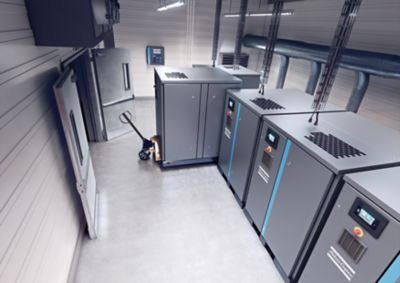Finding ways to make energy savings is absolutely paramount this winter. From households to big industrial plants, we are all looking at ways where we can save energy. But did you know that your compressed air desiccant dryer can also play a part in making savings? The answers to the below 3 questions explain how.
1. When was the last time you changed the desiccant in your compressed air dryer?
Your desiccant dryer for compressed air uses special drying agent beads like silica gel or activated alumina to adsorb water vapour from an air stream. The beads, which are similar to those found in the small packets used to keep leather shoes dry, adsorb and retain the moisture from the air. In compressed air, this is done by pushing the air through this mass of beads, which requires quite a bit of energy. In addition, because the desiccant decomposes over time, this process creates a fine dust that is a health and environmental hazard. Over time, the ability of a desiccant to adsorb moisture decreases significantly. This is due to the cyclic effect of adsorption & desorption; hydrothermal ageing and the impurities present in the air.
Depending on the desiccant type, the service interval in normal conditions varies from 3 to 5 years to ensure the desiccant can absorb all the moisture and retain the desired dew point, keep the lowest possible pressure drop and make sure the dryer operates optimally. Together with the desiccant, the moving parts in the dryer should also be replaced because the constant switch from one chamber to another eventually leads to wear.
2. Why is desiccant selection so important?
Atlas Copco has different desiccants - Alumina, Molecular and Silica - depending on the operating conditions. If the wrong mixture of desiccants is selected, the dryer won't be able to operate properly, resulting in increased energy consumption, a high-pressure drop, bad dew point and potential contamination in the production line.
To make sure you are using the right mixture for your application, quote #UltidryWinter for advice. You’ll also get the best price on a desiccant change with this hashtag
3. Why should I use the desiccants from Atlas Copco?
Atlas Copco desiccants are designed to provide the highest efficiency with the longest lifetime. The proven performance of our Ultidry Alumina, Molecular and Silica ranges ensures the high quality of your compressed air. Even after years of regeneration cycles, the longer lifetime of the desiccant maintains a high adsorption capacity, meaning less waste and lower operating costs. The right particle size for the right pressure drop and right adsorption capacity means less regenerating heat is required for the dryers, lowering energy bills. Also, less dust is generated due to the high attrition rate and crush strength of the premium desiccants, leading to lower costs for post-filter changes and downstream valves.






